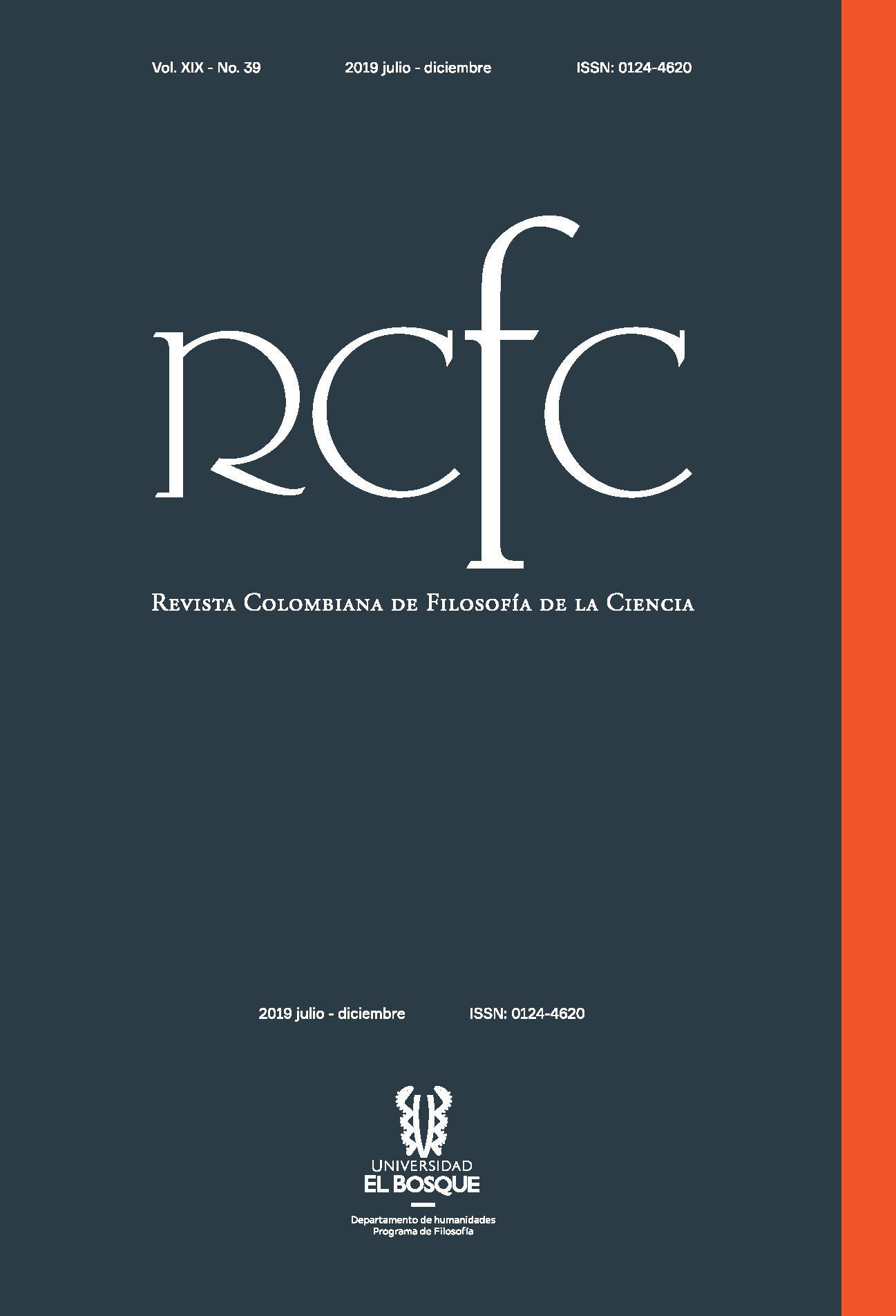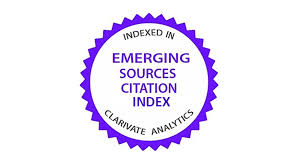The Twin Paradox in the Writings of Einstein
DOI:
https://doi.org/10.18270/rcfc.v19i39.3025Keywords:
paradox, twins, relativity, clocks, time, EinsteinAbstract
The classic solution of the twin paradox is based on the idea that there is an asymmetry between accelerated and inertial systems of reference. This traditional solution points out that only the twin on the spaceship experiences the relativistic effects and therefore ages less during his space trip than his brother on Earth. In this paper we offer an exegesis of Einstein’s own solution, which is not only different, but also provides reasons to ask whether he actually thought that the twin in the spaceship ages slower.
Downloads
References
Bergson, Henri. Duración y simultaneidad (a propósito de la teoría de Einstein). Buenos Aires: Ediciones del Signo, 2005.
Canales, Jimena. The Physicist and the Philosopher. Einstein and Bergson and the Debate that Changed our Understanding of Time. New Jersey y Oxfordshire: Princeton University Press, 2015.
Cassirer, Ernst. Zur einsteinschen Relativitätstheorie. Hamburg: Felix Meiner Verlag, 2001.
Chandru, Iyer y Prabhu, Gurpur. “A Variation of the Clock Paradox and a Distinguishing Feature of an Inertial Frame”. Journal of Physics and Natural Sciences 1.1 (2007): 1-8. <https://arxiv.org/pdf/0809.4465v1.pdf>.
Einstein, Albert. “Zur Elektrodynamik bewegter Körper”. Annalen der Physik 17 (1905): 891-921.
_____. “Über das Relativitätsprinzip und die aus demselben gezogenen Folgerungen”. Jahrbuch für Radiaktivität und Elektronik 4 (1907): 411-462.
_____. “Über den Einfluß der Schwerkraft auf die Ausbreitung des Lichtes”. Jahrbuch für Radioaktivität und Elektronik 4 (1911): 898-908.
_____. “Die Grundlage der allgemeinen Relativitätstheorie”. Annalen der Physik 49 (1916): 769-822.
_____. “Dialog über Einwände gegen die Relativitätstheorie”. Die Naturwissenschaften 48 (1918): 697-702.
_____. Sobre la teoría de la relatividad especial y general. Madrid: Alianza, 2004.
Feynman, Richard. Física I. Volumen, radiación y calor. México D. F.: Addison Wesley & Longman Iberoamericana, 1998.
Grøn, Øyvind y Eriksen, Erik. “Relativistic Dynamics in Uniformly Accelerated Reference Frames with Application to the Clock Paradox”. European Journal of Physics 11.1 (1990): 39-44. <http://iopscience.iop.org/article/10.1088/0143-0807/11/1/007>.
Grøn, Øyvind. “The Twin Paradox in the Theory of Relativity”. European Journal of Physics 27.4 (2006): 885-889.
_____. “Relativistic Resolutions of the Twin Paradox”. Current Science 92.4 (2007): 416-418.
_____. “The Twin Paradox and the Principle of Relativity”. Physica Scripta 87.3 (2013): <https://arxiv.org/pdf/1002.4154.pdf>.
Hafele, Joseph C. y Richard E. Keating. “Around the World Atomic Clocks: Predicted Relativistic Time Gains”. Science (New Series) 177.4044 (1972): 166-168. <https://doi.org/10.1126/science.177.4044.166>.
Howard, Don. “Was Einstein Really a Realist?”. Perspectives on Science 1.1 (1974): 204-251.
Iorio, Lorenzo. “An Analytical Treatment of the Clock Paradox in the Framework of the Special and General Theories of Relativity”. Foundation of Physics Letters 18.1 (2005): 1-19. <arXiv:physics/0405038v5>.
Langevin, Paul. “L’evolution de l’espace et du temps”. Scientia 10.1 (1911): 31-54.
Laue, Max von. “Zwei Einwände gegen die Relativitätstheorie und ihre Widerlegung”. Physikalische Zeitschrift 13.1 (1912): 118-120.
Low, R. J. “An Acceleration-Free Version of the Clock Paradox”. European Journal of Physics 11.1 (1990): 25-27.
Maudlin, Tim. Filosofía de la física. I. El espacio y el tiempo. México: Fondo de Cultura Económica, 2014.
Max-Planck-Gesellschaft ©. Gravitational Waves Detected 100 years After Einstein’s Prediction, 2016. <https://www.mpg.de/9953360/gravitational-waves-detected>.
Minguzzi, Ettore. “Differential Aging from Acceleration, an Explicit Formula”. American Journal of Physics 73.9 (2004): 1-5. <https://arxiv.org/pdf/physics/0411233.pdf>.
Newton-Smith, William. The Structure of Time. London: Routledge & Kegan Paul, 1984.
Norton, John. “Spacetime, Tachyons, Twins and Clocks”. Einstein for Everyone, 2018. <http://www.pitt.edu/~jdnorton/teaching/HPS_0410/chapters/spacetime_tachyon/index.html>.
Orozco, Edward. “Heidegger y Einstein: relación en torno al tiempo”. Revista Colombiana de Filosofía de la Ciencia 17.35 (2017): 65-89. <https://doi.org/10.18270/rcfc.v17i35.2330>.
Shah, Manhar L. “Special Relativity: Resolving the Twin Paradox While Proving the Traveling Twin Cannot Be Younger”. International Journal of Theoretical and Mathematical Physics 9.2 (2019): 55-61. <https://doi.org/10.5923/j.ijtmp.20190902.06>.
Shuler, Robert L. Jr. “The Twins Clock Paradox History and Perspectives”. Journal of Modern Physics 5.1 (2014): 1062-1078. <http://www.scirp.org/journal/jmp http://dx.doi.org/10.4236/jmp.2014.512108>.
Tipler, Paul y Llewellyn, Ralph. Modern Physics. New York: W. H. Freeman and Company, 2008.
Unnikrishnan, C. S. “On Einstein’s Resolution of the Twin Clock Paradox”. Current Science 89.12 (2005): 2009-2015.
Zyga, Lisa. “In the Twin Paradox Twist, the Accelerated Twin is Older”. Physics.org (2009): 1-3. <https://phys.org/news/2009-06-twin-paradox-older.html>.
Downloads
Published
How to Cite
Issue
Section
| Article metrics | |
|---|---|
| Abstract views | |
| Galley vies | |
| PDF Views | |
| HTML views | |
| Other views | |












